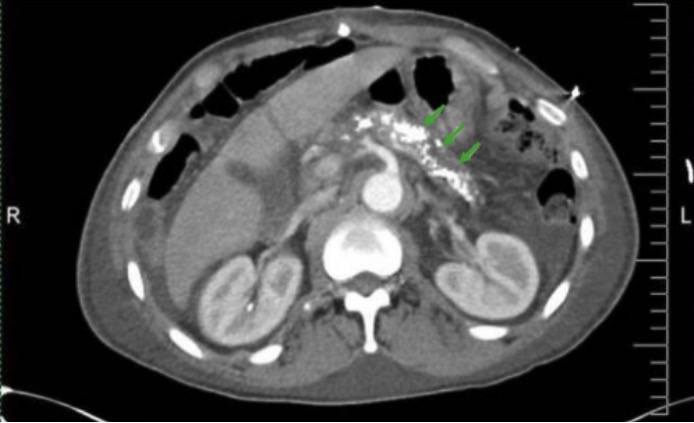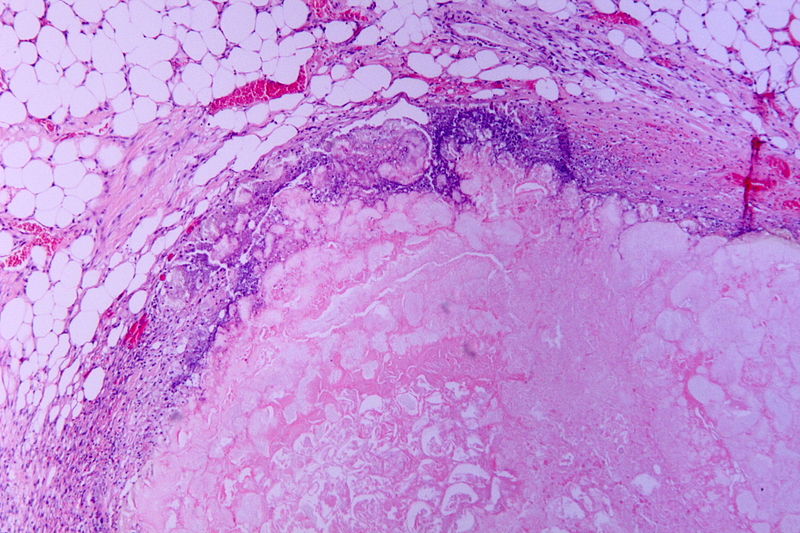Playlist
Show Playlist
Hide Playlist
OMM: Cholecystitis and Pancreatitis
-
Slides OMM Gastrointestinal Considerations.pdf
-
Reference List Osteopathic Manipulative Medicine.pdf
-
Download Lecture Overview
00:00 Cholecystitis is another presentation that potentially could be treated with OMM. Cholecystitis is inflammation of the gallbladder, usually it's secondary to gallstones. Other causes might be due to ischemia and other potential causes you could see there. Usually, there is acute or chronic inflammation and so with osteopathic manipulation we want to check for facilitation. So, remember that T5 to T10 on the right side is the reflex for the liver, T9 to T10 on the right side is the viscerosomatic region for the gallbladder. So, if someone has acute cholecystitis, this is definitely a region where there could potentially be viscerosomatic reflex. Other potential osteopathic findings for cholecystitis, you have to make sure that the lymphatic system is functioning well. 00:54 So checking all the different diaphragms, the inlet, the abdominal diaphragm is of particular importance here because based on the location of the gallbladder you could actually irritate the diaphragm on the right side and sometimes that could also cause reflex pain to the right shoulder. You want to balance autonomics, balance the parasympathetics, looking at the cranial region and the upper cervicals, also check for Chapman reflexes. So the gallbladder Chapman reflex is in the sixth right intercostal space. Also, treating spinal junctions, looking at Zink patterns, treating muscular imbalances and postural dysfunctions will help. Some treatment considerations for cholecystitis, you want to make sure that you treat viscerosomatic dysfunctions first. If you do not treat those first, sometimes the rest of your treatment might be more resistance. 01:52 Treating them first also will help to reset the neural input and normalize facilitated areas. 01:58 Usually persistent right shoulder pain without a history of trauma is a red flag for gallbladder disease. So, here you can see a schematic reminding us of the liver and gallbladder Chapman point being in the right 6th intercostal space. So, again if you find a viscerosomatic reflex there, you could apply a little gentle inhibitory pressure to treat the viscerosomatic reflex. Pancreatitis is another GI presentation that potentially could benefit from the integration of OMM. So pancreatitis is an inflammatory process where it is auto-digesting due to the enzymes. Acutely, most often is secondary to biliary tract disease. Sometimes it is also secondary to alcohol abuse. There are certain risk factors for pancreatitis listed here. Acute pancreatitis could become chronic if it's recurrent. Symptoms include severe abdominal pain, inability to tolerate anything by mouth. Again, sometimes it could be due to chronic alcoholism or some sort of biliary obstruction, tumor or some other pancreatic disease. So in the case of pancreatitis, we want to take a look at potential osteopathic findings and so due to the acute nature of pancreatitis a lot of times there will be very strong viscerosomatic reflexes. So from T5 to T9 bilaterally, you will find pancreatic viscerosomatic reflexes and usually there will be more and greater tissue texture changes with more severe conditions. So additional findings associated with pancreatitis, it's important to check for functioning of the lymphatic system especially the diaphragms. Also associated with pancreatitis is that pancreatitis sometimes will irritate the peritoneum. This irritation will lead to pulmonary splinting when you have such severe pain or at times you don't want to take deep breaths in and so when you don't take deep breaths in you could develop pulmonary atelectasis and that could affect the lungs. You also want to balance parasympathetic activity. So checking the OA, upper cervicals, checking for potential Chapman reflexes, and also Zink patterns. So, utilizing gentle indirect techniques, you don't want to increase any sort of pain for patients suffering from pancreatitis. You want to treat the mid to lower thoracic region for those viscerosomatic reflexes and again look at the OA and upper cervicals because sometimes there might be actual viscerosomatic reflexes that travel along with the parasympathetics leading to issues with the upper cervicals. So remember to also treat any regions of viscerosomatic reflexes by looking for Chapman reflexes. Remember that the Chapman reflex for the pancreas is located in the seventh right intercostal space. So in cases of severe pancreatitis, the patient’s whole body could really be very reactive. So you want to use very gentle techniques, indirect passive techniques to help treat patients with acute pancreatitis so as not to increase their pain and increase their sympathetics. 05:15 So in general, utilizing osteopathic manipulation to integrate and treat musculoskeletal restrictions that contribute to GI diseases could be helpful for treating your patients with these different presentations.
About the Lecture
The lecture OMM: Cholecystitis and Pancreatitis by Sheldon C. Yao, DO is from the course Osteopathic Treatment and Clinical Application by System.
Customer reviews
5,0 of 5 stars
| 5 Stars |
|
5 |
| 4 Stars |
|
0 |
| 3 Stars |
|
0 |
| 2 Stars |
|
0 |
| 1 Star |
|
0 |






